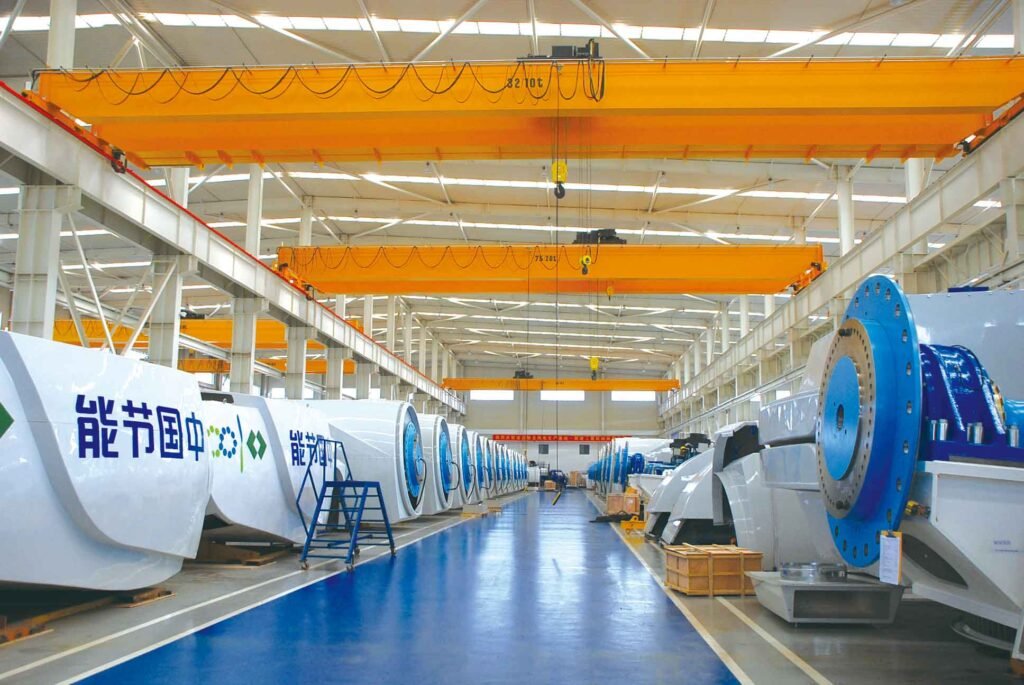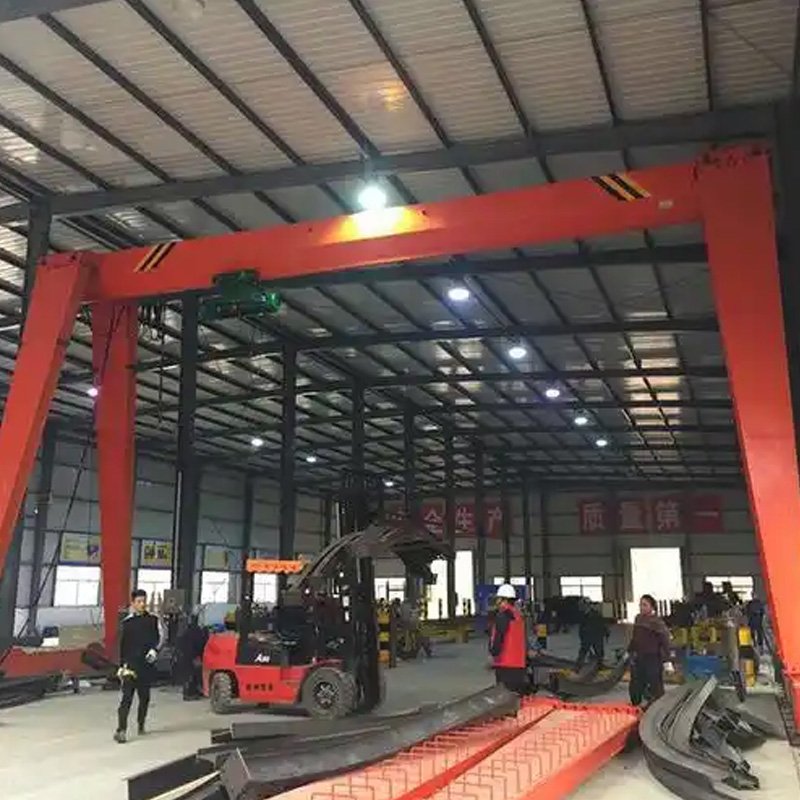Efficient material handling is a critical factor for improving productivity and safety in industrial facilities. Among the most common lifting systems, overhead and gantry cranes stand out due to their versatility and efficiency. By integrating both types of cranes, businesses can significantly optimize their material handling process, improving workflow, safety, and cost-effectiveness.
Understanding Overhead Cranes and Gantry Cranes
Before delving into how they complement each other, it’s important to understand the unique features and advantages of both crane types.
1. Overhead Cranes
- Structure: Typically mounted to the ceiling or support beams of a building, overhead cranes consist of a bridge that spans the workspace. The hoist moves along this bridge to lift and transport materials.
- Application: Ideal for indoor environments, overhead cranes are perfect for handling lighter loads with precision, such as in factories, warehouses, and manufacturing facilities.
2. Gantry Cranes
- Structure: Gantry cranes are supported by legs and can move along wheels or tracks. This design makes them more versatile, especially in outdoor or open environments.
- Application: Gantry cranes typically operate in larger open areas like construction sites, shipyards, and rail yards, where mobility is essential, and operators do not always require precise placement.

How Overhead and Gantry Cranes Complement Each Other
When used together, overhead and gantry cranes create a highly efficient material handling system. Here’s how they complement each other:
1. Maximizing Space Efficiency
- Overhead cranes save valuable floor space by operating above, making them ideal for confined indoor areas.
- Gantry cranes, with their mobility, can cover larger, open spaces, allowing businesses to move materials across different zones in the facility.
2. Handling Different Load Types
- Overhead cranes are excellent for handling lighter loads that need precise movement and positioning.
- Gantry cranes excel at moving heavier loads and handle bulkier materials that require transportation over larger distances.
3. Improving Workflow and Productivity
- Using both cranes together enables businesses to divide tasks effectively. Overhead cranes handle assembly lines and precise lifting, while gantry cranes manage larger, bulkier materials that need to be moved across the facility.
- This division of labor ensures smooth and uninterrupted operations, reducing bottlenecks and improving the overall speed of material movement.
Enhancing Safety with Overhead and Gantry Cranes
Safety is a crucial consideration in any industrial setting, and both overhead and gantry cranes contribute to safer workplaces in the following ways:
1. Reducing Worker Risks
- With overhead cranes, workers can operate at a safe distance from heavy loads, minimizing the risk of injury.
- Gantry cranes offer better visibility and control, allowing operators to maneuver large loads with less risk to themselves and others in the work environment.
2. Remote Control Features
Many modern systems come equipped with remote controls, keeping workers at a safe distance from hazardous operations while still performing tasks with precision and control.
3. Stability and Control
Both crane types are designed with stability in mind, helping prevent accidents caused by sudden shifts in weight or load mismanagement. The solid construction and advanced braking systems enhance control, ensuring smooth and safe operation.

Cost-Effectiveness and Increased Productivity
Using both types of cranes can also help businesses reduce costs while boosting overall productivity:
1. Reducing Labor Costs
By automating material handling, both types of cranes reduce the reliance on manual labor, which significantly lowers operational costs and helps avoid fatigue and injuries among workers.
2. Boosting Operational Efficiency
- The combination of overhead and gantry cranes streamlines material movement. While overhead cranes can handle precise lifting tasks, gantry cranes cover larger distances quickly, minimizing downtime and ensuring a smooth workflow.
- These cranes also increase the speed of loading and unloading materials, leading to faster project turnaround times.
3. Energy and Space Savings
Overhead cranes are space-saving, working efficiently within confined spaces without obstructing the floor area. Gantry cranes, on the other hand, can be used to handle heavy materials over large areas, ensuring that both space and energy are used efficiently.
Real-World Applications
The combined use of overhead and gantry cranes is highly beneficial across various industries. Some examples of where these cranes work together include:
- Manufacturing Plants
Overhead cranes handle lighter materials or components along production lines, while gantry cranes move heavy materials or equipment from one area to another. The coordination between the two boosts efficiency and minimizes downtime.
- Construction Sites
On construction sites, gantry cranes are used for moving large and heavy construction materials, while overhead cranes handle precise operations, such as lifting tools and smaller machinery.
- Warehouses and Distribution Centers
In large warehouse settings, overhead cranes are used for moving smaller, lighter loads, while gantry cranes handle bulk shipments or oversized items that need to be transported across long distances within the facility.

Optimizing Your Material Handling System with Cranes
Integrating overhead and gantry cranes into your material handling system offers many benefits, including improved space utilization, enhanced safety, increased productivity, and reduced costs. By choosing the right combination of cranes, businesses can optimize their operations and ensure smoother, more efficient workflows.
If you are looking to upgrade your facility’s material handling process, overhead and gantry cranes offer a flexible and effective solution. Contact yonghaoqizhong@163.com today to discuss how we can tailor a solution to meet your specific needs.





